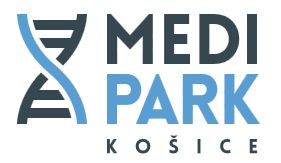QMAGNA is the university part of the Centre of Very Low Temperatures Physics – Centre of Excellence, formed by the Slovak Academy of Science and the P.J. Šafárik University in Košice. Current scientific goal of the group is to study low-dimensional magnetic structures, especially single-molecule nanomagnets and other systems based on superconductors and glassy semiconductors by means of nanotechnologies for their prospective use in quantum computers. Members of the team, along with their Master and Ph.D. students, have formulated their own research programme, the common feature being the study of predominantly low-dimensional materials in their entire complexity. Cooperation within the team, involving for example sharing the experimental techniques, mutual assistance and, above all, critical discussions, leads to the creation of new methods and ideas, often results in “micro-projects” in the form of joint publications. Nowadays, the team consists of the following members:
- Dr. h. c., Prof. RNDr. Alexander Feher, DrSc.
- Prof. Ing. Martin Orendáč, CSc.
- Assoc. Prof. RNDr. Alžbeta Orendáčová, DrSc.
- Assoc. Prof. RNDr. Erik Čižmár, Ph.D.
- Mgr. Vladimír Komanický, Ph.D.
- Mgr. Tomáš Samuely, Ph.D.
- RNDr. Róbert Tarasenko, Ph.D.
RNDr. V. Tkáč, PhD., former postdoctoral fellow at Charles University in Prague, is also a member of the team. He will experimentally investigate topological insulators.
Experts from abroad also regularly come to work in the team. At present, Prof. M. Meisel (University of Florida, Gainesville) and Dr. S. Vorobiov (Sumy State University, Ukraine) are team members.
Fair and friendly relations have for long and purposefully been cultivated within the team, they are based on mutual respect and a sense of cooperation. The credo that the creative work progresses best in a peaceful and friendly milieu governs the team members. We emphasize that also the students have to be drawn into the teamwork and feel good as a part of the team. Currently, the team is well age-balanced, governed by a non-conflicting and an excellent friendly atmosphere. Each team member is in charge of operation of one or two experimental devices, team members flexibly participate, in varying proportions, in research topics. The laboratories are equipped with an excellent infrastructure for the preparation of nanostructures by the so-called top-down method, for the characterization of nano-sized objects and for the research of new physical phenomena and unconventional materials under extreme conditions (very low temperatures, strong magnetic fields, high pressures, and reduced dimensions – the nano-sized objects), [http://ufv.science.upjs.sk/laboratoria.php?lang=en]













